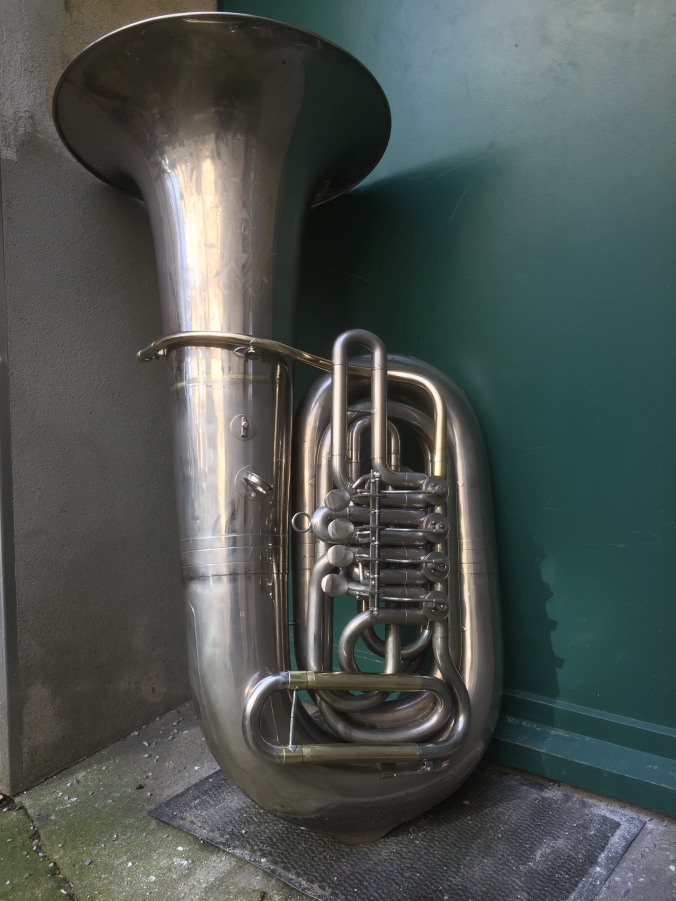
Ahoy Comrade
On the 11th of June 1960, Czechoslovakia’s government ratified the “Constitution of Czechoslovakia”(Ústava Československé socialistické), changing their name from Czechoslovak Republic to Czechoslovak Socialist Republic, in case it wasn’t clear where their political focus was. By this time, most of the major Czech brass makers had been disbanded, in some cases exiled, with the remainder assembled under the name “Amati”. Great names such as Cerveny, Bohland & Fuchs, and Lidl remained, however many great makers and craftsmen were consigned to the history books.
By the 1960s, Amati was ordered (as part of the manufacturing industry) to ramp up production. Drawing upon a huge catalogue of designs, Amati took the basic bugle design from a Cerveny Kaiser BBb, the architecture from Bohland & Fuchs to create in my opinion, one of the first modern kaiser tubas.

Be careful….if you get any closer, it might bite.
I current have a 1930s Cerveny Kaiser quietly sitting in the corner of my workshop. It’s slightly smaller in statue than the legendary Cerveny 601 model although it has the same tubing layout, including the vertically orientated main tuning slide. When the Amati came in to my shop for a service, I noticed that although the two kaisers were constructed differently, the dimensions of the tubing was almost identical. I am quite certain Amati used the older Cerveny tooling to construct this model. For example, the bells of both horns fit 1:1. They both share the ubiquitous 21.20mm cylindrical valve bore. The original long-replaced leadpipe of the Amati is also identical to the Cerveny.
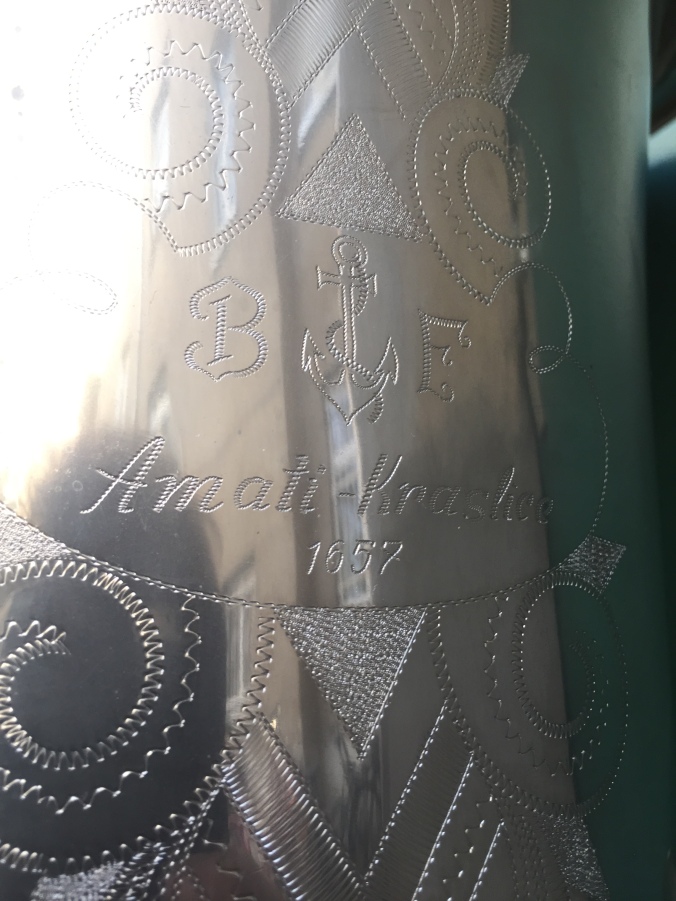
The boat anchor logo is a veiled reference to the tuba’s weight.
Amati’s target market was mostly to military bands especially those in west europe, thus providing the business with a steady stream of income. After WW2, the name Bohland & Fuchs still inspired memories of the remarkable kaisers of the prewar era. In using the B&F name and logo, Amati was hoping as a marketing ploy, to reach more customers. They also did something similar with their saxophone line, using the Keilwerth name, although the original maker had reestablished his factory in Bayern Germany in the late 1940s. After a lengthy court battle, Keilwerth finally managed to stop Amati from using their name, but at a hefty financial cost.
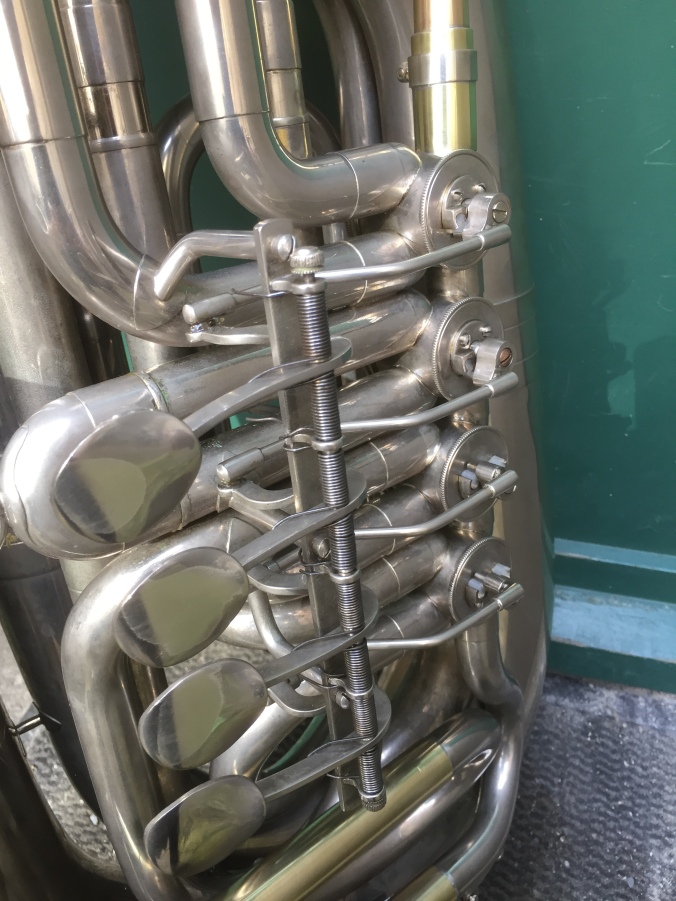
Interesting mix of 1930s paddles with modern linkage and springs.
Interestingly enough, Amati did borrow a bit of the Bohland & Fuchs design when creating this model. The valve block design, although sharing the ubiquious Graslitz 21.20mm bore, actually uses the pre WW2 B&F tubing layout including the bracing placement.
I am still wondering which B&F tuba model provided the overall layout with it’s horizontal main tuning slide and compact wrap. It bears an uncanny resemblance to the kaiser tubas from the Rudolph Meinl firm, who also have their roots in the pre WW2 Gräslitz companies. There are Bohland and Fuchs catalogues with kaiser tubas sporting horizontal tuning slides, but as of yet I have not seen one live. There was a 1930s Markneukirchen maker who constructed tubas like the Amati, but I have only seen one example, hardly proving more than a neighborly connection. I have also seen other Gräslitz makers tubas with this layout, but unfortunately, they were unmarked, as in no company name.
For whatever reasons, Amati decided on this design. Perhaps it was a way to set the model apart from the still produced Cerveny Kaisers with their vertical tuning slides and taller construction.
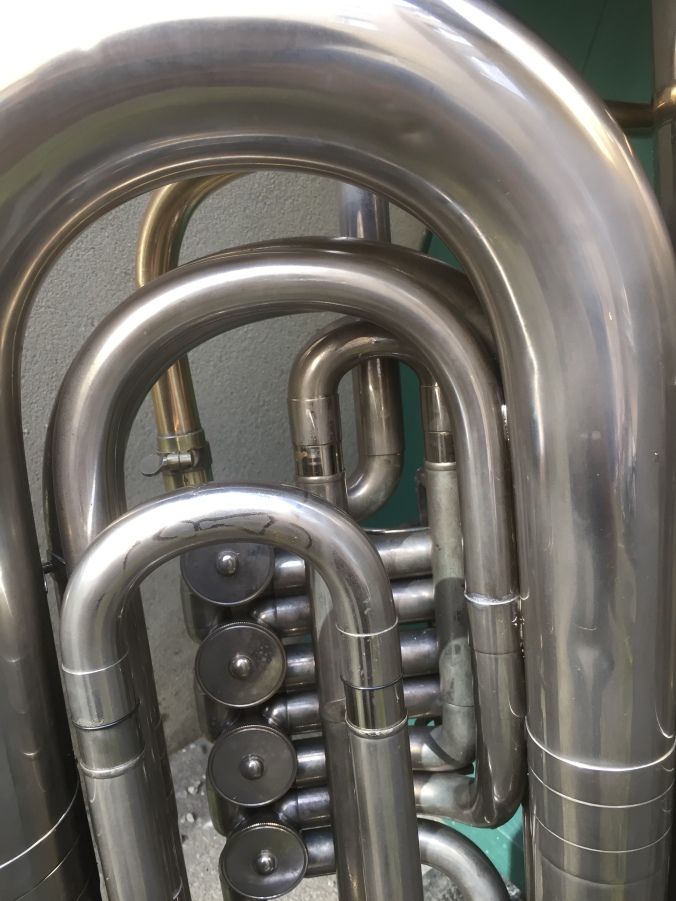
Rudolph Meinl owners would feel at home.
The Amati 1697 was produced up till the present as it has become known as the Cerveny CBB 691, and there was also a C-tuba version. It seems to have been dropped from the website, but I’m sure the tooling is still there should anyone want a modern version. However, the older pre 1980s versions are made of sterner stuff and sound and “feel” much more present than the later versions.

the modern version…
This particular horn came into my shop a few months back from a professional tubist in Berlin. His instructions were to get the kaiser ready for the upcoming season. The original leadpipe had been replaced with a smaller tapered version, and the tuning slide was a bit of a mess.
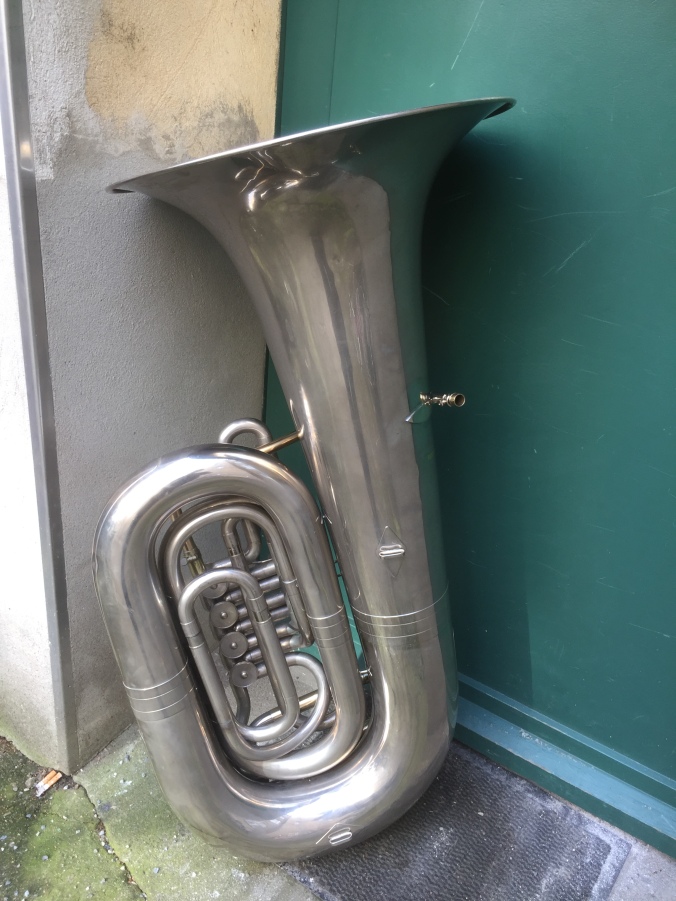
Curves in all the right places.
After a great deal of patient work, I managed to sort out most of the various issues and was able to give the tuba a decent test. Most kaiser tubas made before WW2 tend to have a somewhat soft response and unless pushed, have a relatively warm and billowy sound. This tuba is more like an angry drunkard ready to destroy the bar. The heavy nickel plating and thicker postwar tubing lets the tuba response quickly like it’s prewar cousins, but with a sonic power in the sound not found before the 1940s. I am certain with the right mouthpiece, this tuba will either win you accolades from your collegues or cost you your job. If the later happens to you, please feel free to write me with your asking price….
Specs:
1960s-70s Amati “Bohland & Fuch” B-Tuba Kaiser Modell
4 rotary valves 21,20mm bore
heavy nickel plating, yellow brass construction
bell diameter 50cm
height 104cm
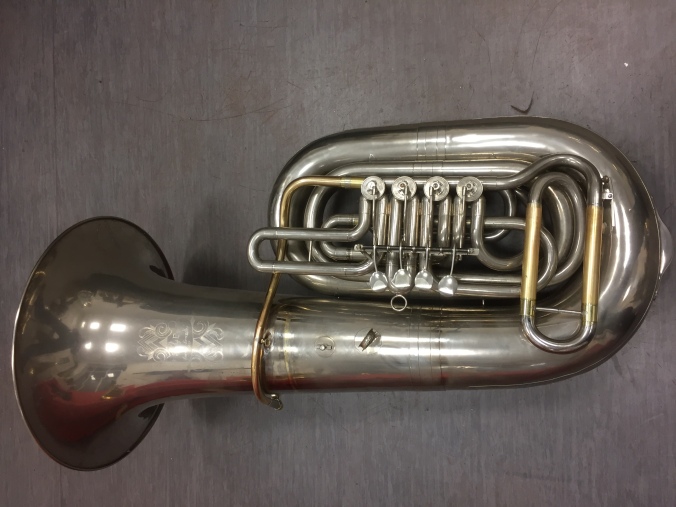
Another great post–thank you!!
5/4 or 6/4 ?
6/4